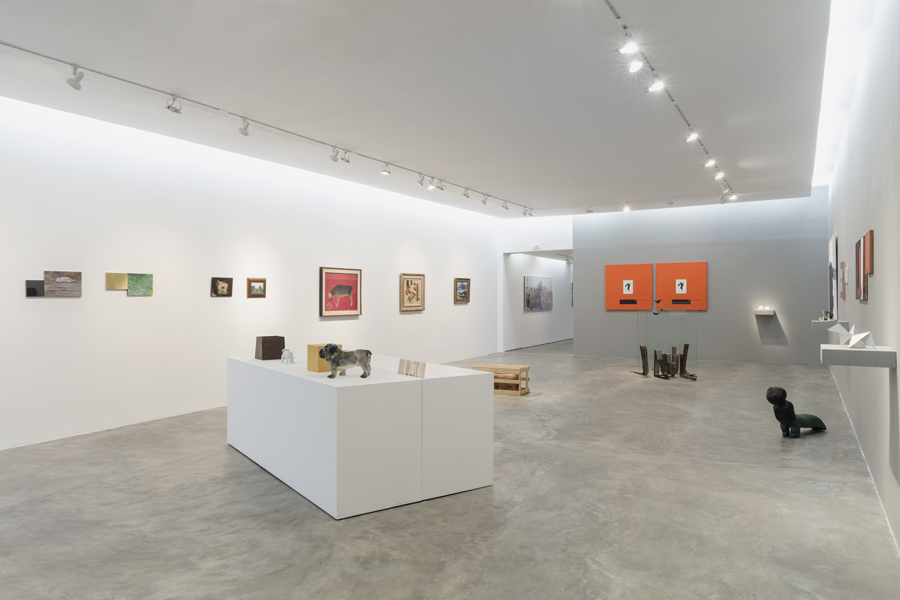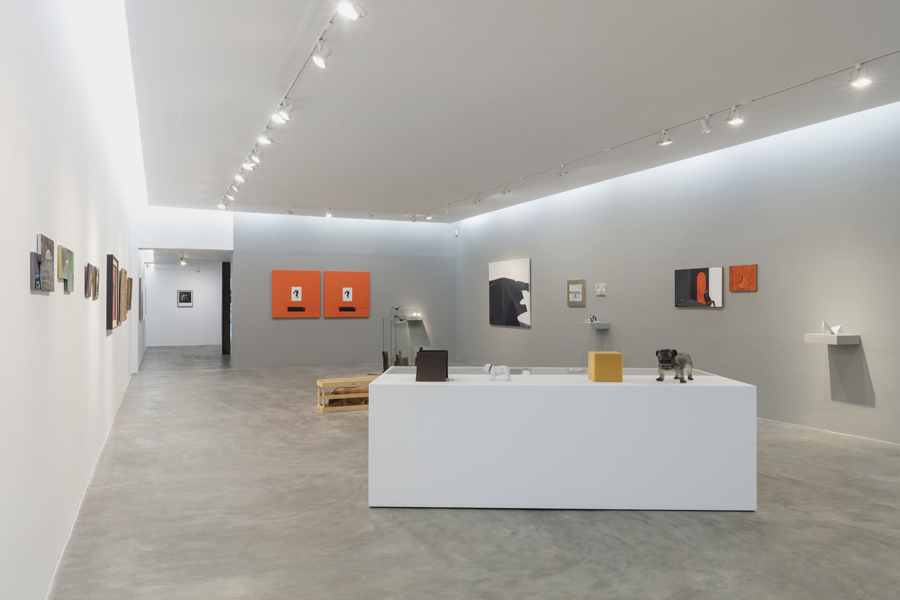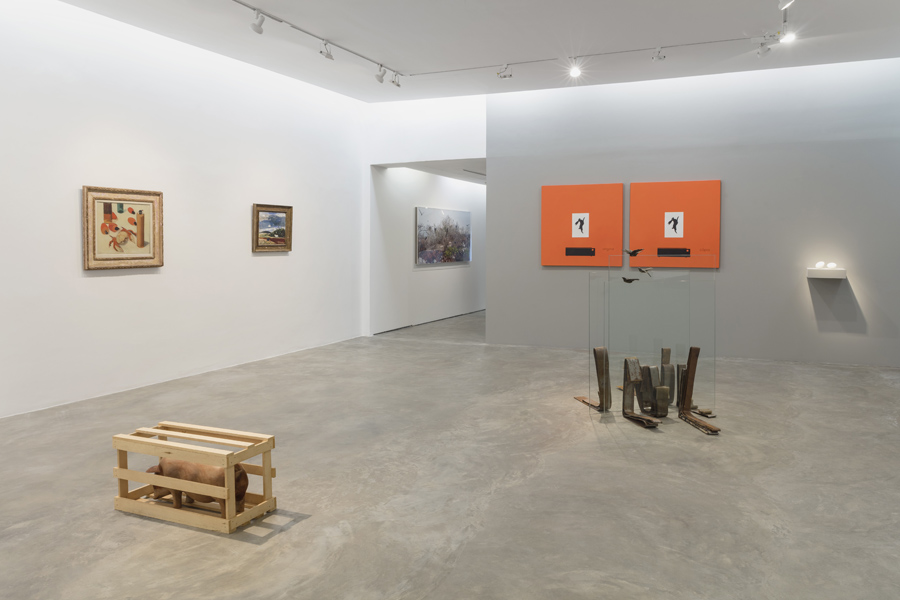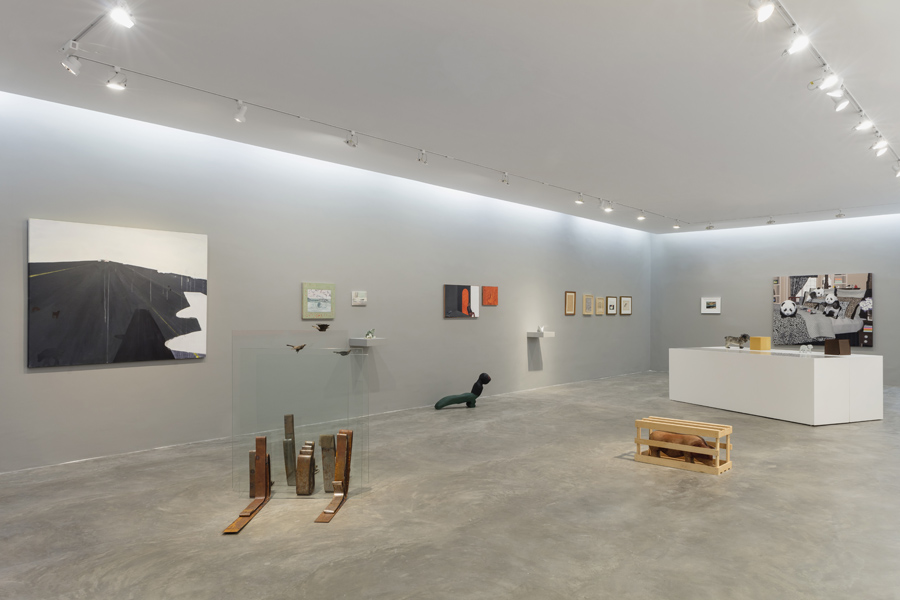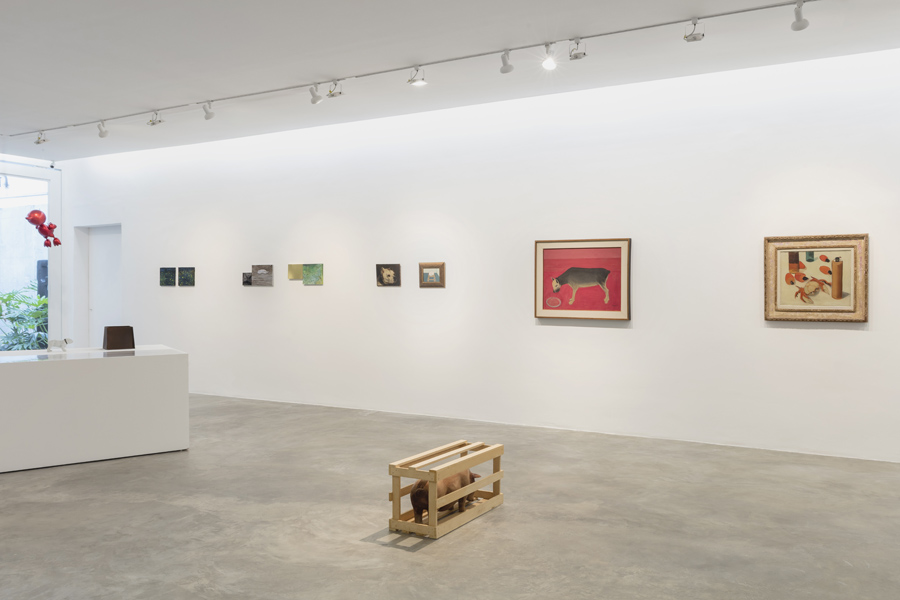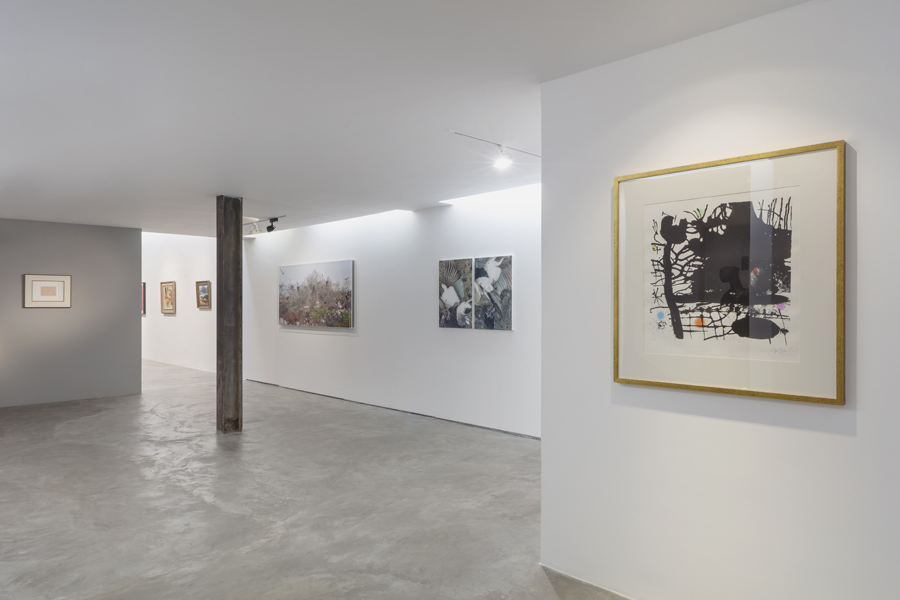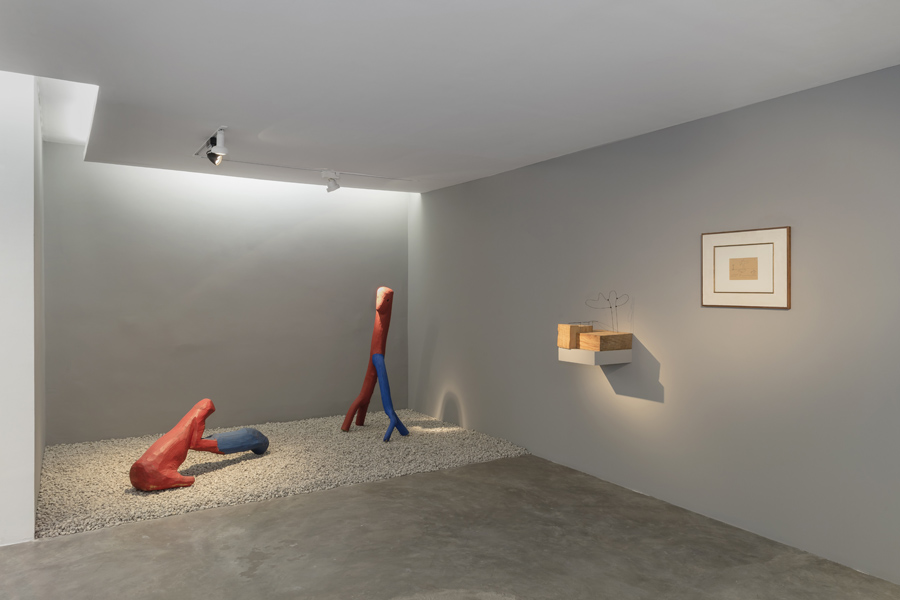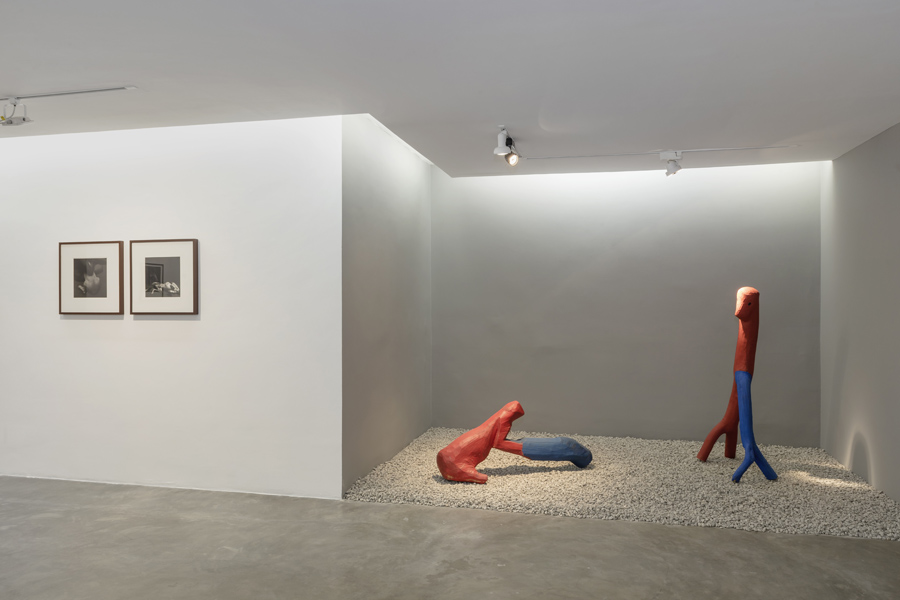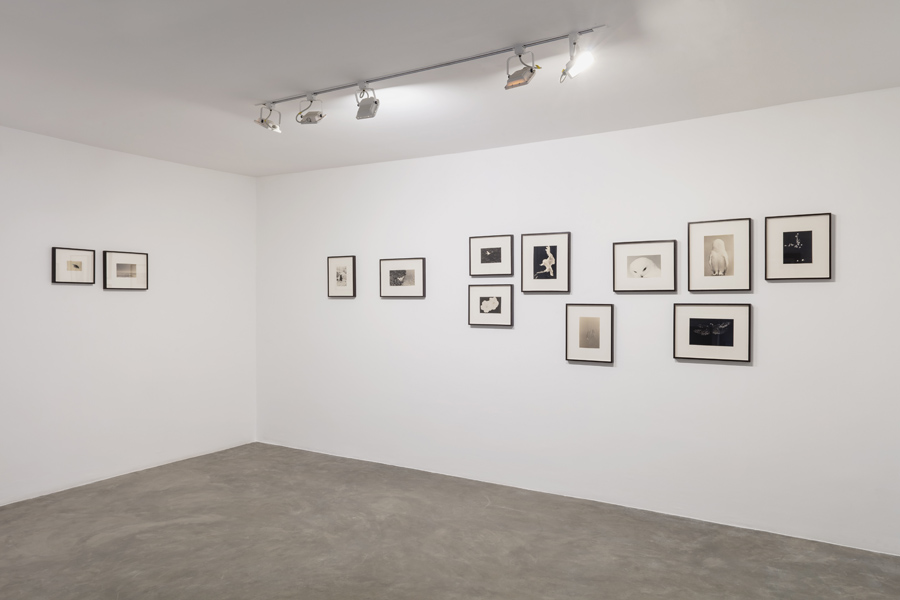ANIMAL
Alfredo Volpi, Ana Elisa Egreja, Ana Paula Oliveira, Ana Sario, Claudia Jaguaribe, Cristina Canale, Djanira, Edu Simões, Efrain Almeida, Eleonore Koch, Ernesto De Fiori, Fang, Gabriela Machado, Guima, Guto Lacaz, Ivan Serpa, José Pancetti, Julio Villani, LIUBA, Luiz Paulo Baravelli, Lygia Clark, Marcello Grassmann, Marco do Valle, Mario Cravo Neto, Oswaldo Goeldi, Renato Rios, Rodrigo Braga, Rogério Degaki, Silvia Velludo, Siron Franco, Tarsila do Amaral, Tatiana Blass, Thomaz Ianelli, Véio, Victor Brecheret, Victor Mattina, Yamamoto Masao, Zé Bico (José Carlos Machado)
galeria marcelo guarnieri | são paulo
abertura
21.11.2019 / 19h – 22h
período de visitação
21.11.2019 – 08.02.2020
Alameda Lorena, 1835
São Paulo – Brasil
[ mapa ]
ANIMAL
por Anette Hoffmann
Ser pouco ágil, destituído de recursos agressivos como unhas e dentes afilados, o homem do paleolítico tinha a constituição mais próxima de uma presa. Nas paredes dos ambientes mais resguardados das cavernas que habitava, desenhou cenas de seu cotidiano, onde os animais eram presença constante. Não o movia nenhum propósito estético, mas mágico. Como mágica era sua relação com a natureza. Os desenhos o relacionavam simbolicamente com as forças, para ele sobrenaturais, que nela se manifestavam. Temia e ao mesmo tempo respeitava as qualidades dos animais. Dotado de um cérebro diferenciado, desenvolveu artefatos e uma organização social que lhe permitiram dominar a natureza. Domesticou o animal, usou-o em seu proveito. Usou sua força no trabalho e na guerra. Esfolou-o para vestir-se. Nutriu-se de sua carne e de seu leite. Humilhou-o para divertir-se. Mas os mistérios mais profundos da natureza e de suas criaturas não se revelavam ao assédio de seus instrumentos e de sua inteligência. O animal alimentou pelos séculos afora seu imaginário. Viu-o ora como um deus, ora como aparentado aos demônios. Imolou-o em seus altares por vê-lo como um elo privilegiado, capaz de intermediar seu contato com os deuses. Perscrutou suas vísceras na tentativa de decodificar mensagens divinas que lhe revelassem o destino. Na inquietude de se auto-definir, usou-o como um referencial ora próximo, ora distante, ora igual, ora completamente outro. No imaginário e nos mitos de muitas culturas, as fronteiras entre o homem e o animal foram frequentemente cruzadas. No sentido oposto, sobretudo na cultura ocidental, ao propor um ordenamento do mundo natural, o homem atribuiu ao animal uma posição subalterna. No afã de defender seu sistema filosófico, Descartes destituiu-o de sua animalidade, comparando-o a uma máquina, incapaz, pois, de experimentar o sofrimento. Na esteira de seu pensamento, a ciência moderna, em nome de um pretenso progresso, imolou-o no altar dos laboratórios. A partir do século XVIII os naturalistas e na seqüência os etólogos, passaram a estudar os animais independentemente do proveito que poderiam trazer para o homem. Em decorrência destes estudos, as fronteiras entre homem e animal revelaram-se cada vez mais porosas. Primatólogos propõem ampliar as fronteiras do gênero Homo para nele incluir os chimpanzés. Filósofos e cientistas nos conclamam a rever nosso conceito de humanidade. Com isso, surge um conflito crescente entre as novas sensibilidades despertadas pelo conhecimento e os fundamentos materiais da sociedade humana.
Longe de esgotar-se, a complexidade das relações homem-animal povoa, sob novas formas, o imaginário contemporâneo. A obra “Bicho” de Lygia Clark materializa esta percepção: o animal, como o homem, não é redutível a um plano único. Muitas aberturas são possíveis. Aberturas que a própria natureza propiciou. Mas que, de forma assustadora, a ciência e a tecnologia ampliaram: os trans-gênicos e os clones engendrados nos laboratórios, levam-nos à possibilidade de um futuro pós-humano, como mostram as inquietantes obras de Rodrigo Braga. Isto num momento em que sequer sabemos definir o que caracteriza a nossa humanidade.
No sentido oposto, surge um movimento de resgate de nossa relação com o animal, de renovação de um pacto rompido pela postura utilitarista. Muitos artistas estendem ao animal um olhar indagador, sensível a suas qualidades. O animal, insondável e inquietante, tem um lugar central na obra de Goeldi. Como muitos viajantes que no passado aportaram no Novo Mundo, Ivan Serpa constrói um bestiário pessoal, numa espécie de inquietante transgenia poética. Marcello Grassmann percebe o animal como um espelho no qual se refletem as múltiplas facetas de seu próprio ser. Valeu-se desta percepção para desenvolver a capacidade de evadir-se em outras vidas, num procedimento metamórfico capaz de levá-lo ao fundo de si próprio. Dentro de uma concepção anímica, muito presente em sua produção artística, Mario Cravo Neto promove fusões que propiciam ao homem acesso, mediado pelos animais, ao sagrado imanente na natureza.
A exposição ANIMAL nos mostra o fascínio que em todas as épocas, o animal despertou na mente humana. Pela beleza, como mostram algumas obras expostas, mas também pelo mistério. Mistério que nos envia de forma inclusiva, ao interior de nós mesmos, idéia tão bem expressa nos versos de Oliviero Girondo: “Eu, pelo menos, tenho a certeza que não poderia suportá-la (a vida) sem esta aptidão de evasão, que me permite transferir-me onde não estou: ser formiga, girafa, pôr um ovo e, o que é mais importante ainda, encontrar-me comigo mesmo no momento em que havia me esquecido, quase completamente, de minha própria existência”.
Na contramão desta forma de relação mediada por laços de phillia, as figuras animais, que povoam a intimidade de um quarto de dormir na obra de Ana Elisa Egreja, evocam um movimento de distanciamento. Num mundo dominado por relações mercadológicas e pela cultura de massa, os espaços são preenchidos com zumbis, na mesma medida em que tudo, o animal e o próprio homem são esvaziados de sua interioridade.
ANIMAL
Alfredo Volpi, Ana Elisa Egreja, Ana Paula Oliveira, Ana Sario, Claudia Jaguaribe, Cristina Canale, Djanira, Edu Simões, Efrain Almeida, Eleonore Koch, Ernesto De Fiori, Fang, Gabriela Machado, Guima, Guto Lacaz, Ivan Serpa, José Pancetti, Julio Villani, LIUBA, Luiz Paulo Baravelli, Lygia Clark, Marcello Grassmann, Marco do Valle, Mario Cravo Neto, Oswaldo Goeldi, Renato Rios, Rodrigo Braga, Rogério Degaki, Silvia Velludo, Siron Franco, Tarsila do Amaral, Tatiana Blass, Thomaz Ianelli, Véio, Victor Brecheret, Victor Mattina, Yamamoto Masao, Zé Bico (José Carlos Machado)
galeria marcelo guarnieri | são paulo
opening
November 21, 2019 / 7pm – 10pm
exhibition
November 21, 2019 – February 08, 2020
Alameda Lorena, 1835
São Paulo – Brasil
[ map ]
ANIMAL
by Anette Hoffmann
Being less agile, destituited of agressive resources such as sharpened nails and teeth, the man of the Paleolithic had the formation close to a prey. On the walls of the most enshrine ambiances of the caves he indwelled, he drew scenes of his quotidian, where the animals were a constant presence. Not an aesthetical purpose has moved him, but a magical one. As magic was his relation with nature. The drawings were symbolically relating him to the forces, supernatural for him, in which they would manifest. Feared and at the same time respected the qualities of the animals. Gifted with an unique brain, he developed artifacts and a social organization that allowed him to dominate the nature. He tamed the animal, used it to his advantage. Used his force at work and at war. Skinned it to get dressed. He was nurtured of its meat and milk. Humiliated it to have fun. But the deepest mysteries of the nature and its creatures were not revealed to the siege of his instruments and intelligence. The animal fed its imaginary throughout the centuries. Considered it sometimes as a god, sometimes related to devils. Sacrificed it on the altars to see it as a privileged bond, capable of intermediate his contact with gods. Examined its entrails in the attempt to decode divine messages that would reveal the destiny. In the restnessless to get self-defined, he used it as a referential sometimes near, sometimes far, sometimes equal, sometimes completely another. In the imaginary and in the myths of several cultures, the frontiers between the man and the animal were frequently crossed. In the opposite sense, particularly in the western culture, when proposing an order for the natural world, the man attributed to the animal a subordinate position. In the effort to defend his philosophical system, Descartes destituted it of its animality, comparing it to a machine, incapable to feel suffering. On the flow of his thoughts, the modern science, in name of a so-called progress, sacrificed it on the altar of the laboratories. From the 18th century the naturalists and next to it the ethologists, began to study the animals independently from the advantage they could offer the man. As a consequence of these studies, the borders between man and animal were revealed more and more porous. Primatologists proposed to expand the borders of the Homo genre to include in the chimpanzees. Philosophers and scientists call us on to review our concept of humanity. And yet, a crescent conflict between new sensibilities awakened by the knowledge and the material foundations of the human society emerges.
Far from deplete, the complexity of the man-animal relations fulfil, under new forms, the contemporary imaginary. The work “Bicho” of Lygia Clark materializes this perception: the animal, as a man, is not reducible to a single background. Several openings are possible. Openings that the own nature provided. Of which, in a frightening way, the science and the technology enlarged: the transgenic and the laboratory engineered clones lead us to the possibility of a post-human future, as the unsettling works of Rodrigo Braga show. This in a moment we don’t even know how to define what caracterizes our humanity.
In the opposite way, a movement to rescue our relation with the animal, to renew the pact broken by the utilitarian politics arises. Many artists extend to the animal a seeker glance, sensible to its qualities. The animal, unfathomable and restless, has a central position in the work of Goeldi. As many travelers that in the past landed a New World, Ivan Serpa builds a personal bestiary, in a disquieting kind of transgenic poetic. Marcello Grassmann perceives the animal as a mirror in which multiple facets of his own being are reflected. This perception was important to develop the capacity of self evading in other lives, in a metamorphic procedure capable of leading the self inside himself. Within a soulful conception, very present in his artistic production, Mario Cravo Neto promotes fusions that allow the man an access, mediated by the animals, to the sacred immanent of nature.
The ANIMAL exhibition presents us the allure that in all eras, the animal has awakened in the human mind. Through beauty, as some of the works in exhibition reveal, but also through mystery. Mystery that leads us in an inclusive way, to our own interior, an idea so well expressed in the verses of Oliverio Girondo: “I, at least, have the certainty I wouldn’t afford it (life) without this propensity of evasion, that allows me to move myself to where I am not: being an ant, a giraffe, to put an egg and, most importantly, to meet with my own self in the moment I had forgotten, almost completely, about my existence”.
In contrast of this form of relation mediated by bonds of phillia, the animal figures, that fulfill the intimacy of a sleeping room in the work of Ana Elisa Egreja, recall a movement of spacing. In a world dominated by marketing relations and by the mass culture, the spaces are filled with zombies, in the same measure that everything, the animal and the man are emptied of their inwardness.

